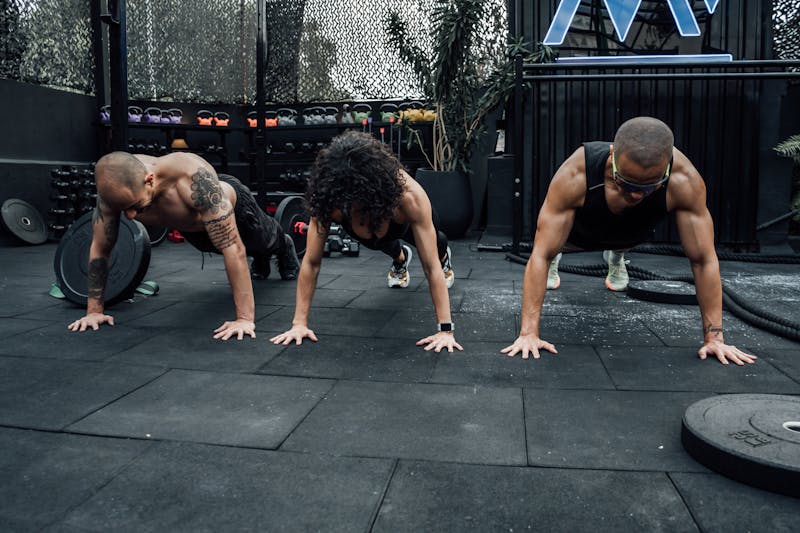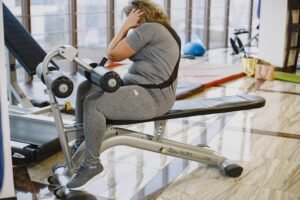Last Updated on November 17, 2025 by shawnshealth
Build strength, mobility, and endurance with calisthenics. This complete guide covers beginner routines, advanced skills, and functional bodyweight training.
The Ultimate Guide to Calisthenics: Build Strength, Flexibility, and Endurance With Bodyweight Training
Calisthenics isn’t just a workout—it’s a return to movement mastery. Whether you’re training in a park, a garage, or a hotel room, bodyweight training builds timeless strength, mobility, and endurance without the need for equipment or ego.
This guide goes beyond the basics. You’ll learn how to build muscle, burn fat, and develop real-world functional fitness through progressive calisthenics. From foundational routines to advanced skills, mental resilience to neurodivergent-friendly strategies, everything you need is here—backed by science, history, and practical experience.
Ready to train smarter, not just harder? Let’s dive in.
Note: In this article, “calisthenics” and “bodyweight training” are used interchangeably. While some may view calisthenics as a specific style of bodyweight movement (often skill-based), both terms refer to using your bodyweight for strength, mobility, and endurance.
Key Features:
- Focus on compound movements
- Builds functional strength
- Highly scalable from beginner to elite
- Minimal to no equipment needed
What Is Bodyweight Training?
- Can be done anywhere—home, park, or while traveling
- A form of strength training using bodyweight for resistance
- Includes exercises like push-ups, squats, and pull-ups
- Builds endurance, coordination, and flexibility
- Requires little to no equipment
What Are the Benefits of Bodyweight Training?
- Builds strength and endurance
- Enhances coordination and mobility
- Requires no equipment
- Can be done anywhere
- Supports full-body functional fitness

Table of Contents
The History and Evolution of Calisthenics/Bodyweight Training
Something to keep in mind about the history of calisthenics is that there is still some question as to when and how calisthenics were performed, and even question as to when and how it was named. What did “calisthenics” include? Were pullups included at first or just pushups, or was it possibly just a reference to a dance like exercise back in the day?
I think It can be easily extrapolated that bodyweight exercise was a staple of military and competitors in history. Yet, we don’t actually know, specifically, what was and was not considered calisthenics until the later part of the 1800’s and early 1900’s.
So, the following is the understood history, but we have to admit that even that can be sketchy on a deep dive into the history of calisthenics. Evidently people were so into calisthenics that they didn’t have time to write it down? I can understand that! For now, this is what we have. So, take this history section with a grain of salt just in case archeologists stumble upon someone’s exercise journal from 2000 years ago.
The History of Calisthenics as we understand it so far
To truly appreciate the power of calisthenics, it’s essential to understand its rich history. The origins of calisthenics can be traced back to ancient Greece, where it was used as a means of building strength, coordination, and agility for military purposes. The word “calisthenics” itself comes from the Greek terms kallos (beauty) and sthenos (strength), which highlights the dual nature of the practice: not only does it build strength, but it also improves aesthetics, allowing for a more graceful, fluid movement pattern.
The ancient Greeks were pioneers in using bodyweight training for physical fitness. Gymnastics was a staple of their training programs, and calisthenics exercises such as push-ups, squats, and lunges were commonly practiced. These movements were integral to building functional strength that could be applied in combat, athletics, and daily life.
Check out this short video from K Boges on The Calisthenics Advantage!
The Renaissance of Bodyweight Training in the 19th Century
Although calisthenics originated in ancient civilizations, its resurgence occurred in the 19th century when Friedrich Ludwig Jahn, a German educator, promoted physical training in schools and military programs. Jahn is often credited with being the “father of gymnastics,” and his work played a key role in formalizing bodyweight exercises as a means of physical education.
By the mid-20th century, calisthenics had gained significant popularity worldwide, particularly in physical education programs, and became a part of military training regimens. It also made its way into civilian life, as many fitness enthusiasts adopted calisthenics for its efficiency and simplicity.
The Modern Calisthenics Movement
In recent decades, calisthenics has experienced a remarkable resurgence. With the rise of social media and fitness influencers, calisthenics has transformed into a global movement. Athletes around the world, particularly those who practice parkour and street workouts, have elevated bodyweight training to a high-performance level. This modern approach incorporates dynamic movements such as the muscle-up, handstand push-ups, and planches, showcasing the extraordinary athleticism that calisthenics can develop.
Today, bodyweight training is no longer reserved for military personnel or athletes; it’s embraced by people of all ages and fitness levels who seek to build functional strength, flexibility, and endurance.
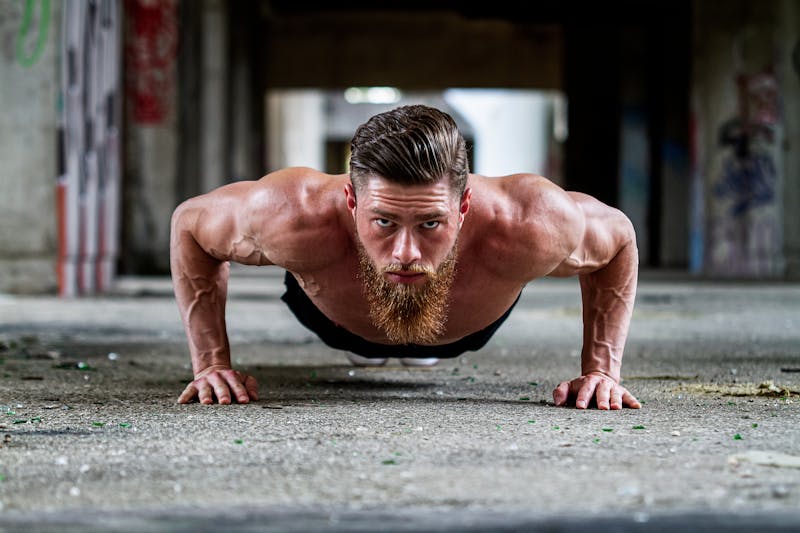
The Science Behind Bodyweight Training
Bodyweight training is grounded in science. Understanding the principles behind bodyweight training is crucial for optimizing results and avoiding injuries. At the heart of bodyweight exercises is the concept of functional movement, which focuses on multi-joint exercises that mimic real-life activities.
Muscle Adaptation and Progressive Overload
One of the fundamental principles of bodyweight training is progressive overload. In traditional weight training, progressive overload is achieved by gradually increasing the weight lifted. In calisthenics, the principle is applied by making bodyweight exercises more challenging over time. There are several ways to increase difficulty:
- Leverage: Altering your body position can make exercises more difficult. For example, performing push-ups on an incline (with the feet elevated) makes the movement more challenging. The more horizontal your body is, the harder the exercise becomes.
- Time Under Tension: Slowing down the movement increases the time your muscles are under tension. For example, performing a push-up with a 3-second descent followed by an explosive push will increase muscle engagement and stimulate growth.
- Volume and Frequency: As you get stronger, increasing the number of sets and reps or working out more frequently will continue to challenge your muscles and promote further growth.
Bodyweight exercises are inherently compound movements, meaning they recruit multiple muscle groups at once. For example, a pull-up activates your back, shoulders, and arms, while a squat works your quads, glutes, and hamstrings. These compound movements help build functional strength and muscular endurance.
🧠Progressive overload isn’t just about adding weight. A 2022 study published in PeerJ found that increasing repetitions—while keeping load constant—can produce similar muscle growth and strength gains as traditional load-based progression. This opens up new programming options for bodyweight and minimalist training
The Role of Core Engagement
Another key aspect of bodyweight training is core engagement. Almost every calisthenics exercise requires the activation of the core muscles, which includes the abdominals, obliques, and lower back muscles. The core is crucial for stabilizing the body during movement, and exercises like push-ups, planks, and leg raises heavily involve these muscles.
This constant engagement not only strengthens the core but also improves posture and stability, making bodyweight training ideal for improving overall functional fitness.
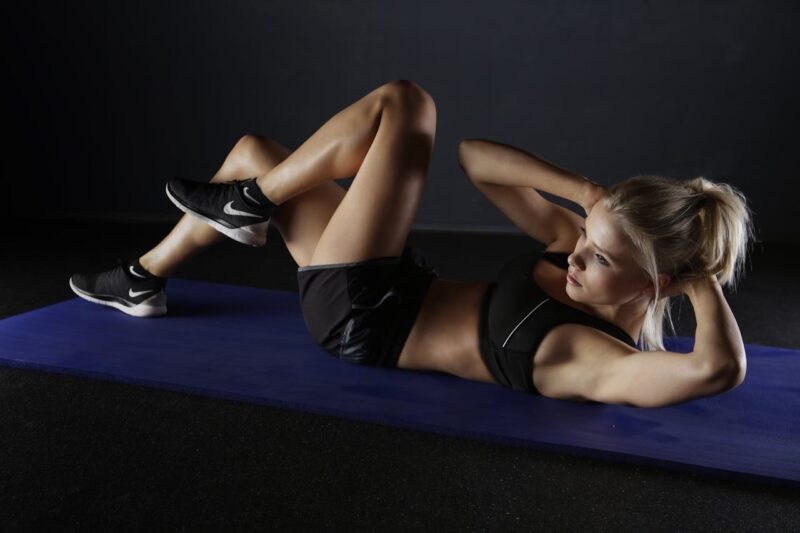
Calisthenics for Different Age Groups
Bodyweight exercise is often perceived as a training method for young, fit individuals, but it is actually beneficial for people of all ages. From seniors to children, calisthenics provides a low-impact and scalable exercise solution for everyone.
😊 Think it’s too late to start calisthenics? Core Calisthenics explains why bodyweight training is joint-friendly, beginner-safe, and ideal for building strength at any age—especially if you’re easing into fitness in your 60s or beyond.
Bodyweight Training for Seniors
For older adults, calisthenics is a fantastic way to maintain and improve mobility, strength, and balance. Because it focuses on bodyweight exercises, the risk of injury is reduced compared to high-impact activities or weightlifting. Exercises like wall push-ups, chair squats, and modified lunges can be performed at a low intensity, and as strength improves, variations can be introduced to increase the challenge.
Seniors who practice calisthenics regularly can experience significant benefits, including improved bone density, joint health, and muscle tone. Additionally, these exercises can help reduce the risk of falls and improve the ability to perform daily activities, such as getting up from a chair or lifting grocery bags.
Bodyweight Training for Kids and Teens
Calisthenics is also an excellent fitness option for children and teenagers. Developing a foundation of functional strength early on helps improve coordination, flexibility, and agility. Exercises like jumping jacks, bear crawls, and bodyweight squats are fun and engaging, making it easier to instill a lifelong love for fitness.
Regular participation in bodyweight exercises also helps kids build self-confidence and fosters discipline. Since these exercises don’t require any equipment, calisthenics can be practiced anywhere, making it an ideal activity for children and teens who prefer to stay active outside or in the comfort of their home.
Bodyweight Training for Women and Men
Women and men find equal benefits from bodyweight training in that calisthenics provides a great way to build strength, muscle tone, and endurance while promoting a lean physique. Bodyweight exercises like push-ups, squats, and dips can effectively target all major muscle groups, leading to a toned and athletic body.
In addition to muscle building, bodyweight training improves mobility and joint health, making it an excellent choice for women and men of all ages. Bodyweight exercise can be tailored to suit any fitness level, from beginner to advanced.
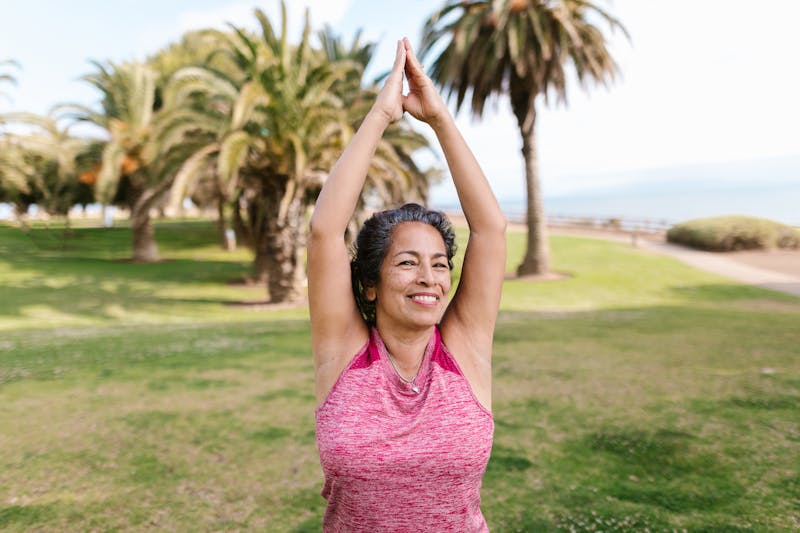
Calisthenics for Weight Loss
While bodyweight training is often associated with building strength and muscle, it is also an incredibly effective tool for fat loss. One of the reasons calisthenics is so effective for weight loss is that it can incorporate high-intensity interval training (HIIT) principles.
Anecdotal evidence seems to suggest that there may be a subconscious mechanism where, because we are managing our own bodyweight, our body and mind sense this and naturally want to decrease body weight in terms of fat, since the less weight that is carried on the body makes it easier to perform calisthenics movement. Whereas traditional weightlifters may find that it’s easier to use leverage to lift weights with higher body weight, thus encouraging weight gain. Again, the jury is still out on this.
HIIT and Fat Burning
HIIT involves alternating between periods of intense activity and short rest periods. This type of training has been shown to increase caloric burn and metabolic rate, leading to significant fat loss. In bodyweight training, exercises like jump squats, burpees, and mountain climbers can be done in rapid succession, turning your workout into a calorie-torching fat-burner.
For example, a basic bodyweight HIIT routine might look like this:
- 30 seconds of push-ups
- 30 seconds of squat jumps
- 30 seconds of mountain climbers
- 30 seconds of rest Repeat this circuit for 4–6 rounds.
This type of training not only burns fat but also increases cardiovascular endurance, helping to improve overall fitness.
Common Calisthenics Mistakes and How to Avoid Them
As with any form of exercise, it’s easy to make mistakes, especially if you’re new to calisthenics. Here are some common pitfalls and how to avoid them:
- Poor Form: One of the most common mistakes in bodyweight training is poor form. Many people rush through exercises without paying attention to proper technique, which can lead to injury. Whether you’re performing a push-up or a squat, always ensure your body is aligned and that you engage the correct muscle groups. If necessary, use a mirror or record yourself to check your form.
- Neglecting Progression: Another mistake is failing to progress in difficulty as you get stronger. Bodyweight exercises should challenge you over time to continue seeing results. If you’re doing the same variation of push-ups after several weeks, it’s time to switch things up by adding more reps, sets, or a more difficult variation.
- Skipping Warm-ups and Cool-downs: Warming up before a workout and cooling down afterward are essential to prevent injury. Dynamic stretches before a workout increase flexibility and prepare the muscles for movement, while static stretches after a workout help to improve flexibility and promote recovery.
- Overtraining: Overtraining can lead to burnout and injury. Ensure you have a balanced routine that includes sufficient rest days and incorporates different types of exercises. Your muscles need time to recover and rebuild stronger.
⚠️ Just starting bodyweight training? Learn the 5 most common calisthenics mistakes that can derail your progress—like poor form, skipping foundational moves, or overtraining. Especially helpful if you’re rebuilding strength after injury or starting later in life.
Take a look at this short video from Hampton at Hybrid Calisthenics on another take of beginner fitness mistakes.
How to Build a Calisthenics Training Routine: Advanced Tips
Once you’ve mastered the basics, you’ll want to level up your bodyweight training. Here are some advanced tips to take your bodyweight workouts to the next level:
- Train for Specific Goals: Whether you want to achieve handstand push-ups, muscle-ups, or planches, focus on your specific goals and tailor your routine to achieve them. Incorporate progressions that target the skills needed for these advanced movements.
- Use Super-Sets: Super-sets involve performing two exercises back-to-back without rest. Pairing exercises that target different muscle groups, like push-ups and pull-ups, helps increase workout intensity and challenge the body more effectively.
- Increase Time Under Tension: Slow down your reps to increase the intensity. Slow push-ups or slow squats force your muscles to stay engaged for longer, increasing time under tension and promoting muscle growth.
- Track Your Progress: Keep a detailed workout log to track your progress. Record your sets, reps, and any variations you’ve implemented. Tracking your progress will help you stay motivated and ensure you’re consistently improving.
Integrating Bodyweight Training with Other Fitness Regimens
While bodyweight training can be an entire workout routine on its own, it also integrates well with other types of exercise. For example, pairing calisthenics with weight training or yoga can help create a well-rounded fitness regimen.
- Bodyweight Training + Weight Training: Weightlifting is great for isolating muscle groups and building strength. Combining it with calisthenics can help you improve muscle endurance, mobility, and overall functional strength.
- Bodyweight Training + Yoga: Yoga enhances flexibility, balance, and mental focus. Integrating yoga with calisthenics can improve recovery and increase mobility, allowing for more efficient and safer workouts.
- Bodyweight Training + Cardio: You can combine calisthenics with aerobic exercises like running or cycling to improve cardiovascular fitness. For example, alternating between bodyweight exercises and steady-state cardio maximizes fat burning and endurance.
Calisthenics for Mental Toughness and Stress Relief
One of the often-overlooked benefits of bodyweight training is its ability to improve mental toughness and reduce stress. The focus and discipline required during bodyweight training help cultivate a strong mental attitude, which carries over into daily life.
- Mindfulness and Focus: Many bodyweight exercises require complete focus, which helps clear the mind and reduce stress. Focusing on your breathing and form during each rep brings you into the present moment and fosters mindfulness.
- Endorphins and Mood Boosting: Like other forms of exercise, bodyweight training stimulates the release of endorphins, the body’s natural feel-good chemicals. Endorphins help combat anxiety and depression, leaving you feeling energized and positive.
- Building Resilience: Bodyweight training pushes you to continually challenge your body and overcome obstacles. As you master new exercises and advance in your training, you build mental resilience, which can translate to a more positive and determined mindset in other areas of your life.
🧠 Feeling low on motivation or stressed out? Discover how exercise boosts mental health—from lifting mood and sharpening focus to easing anxiety. For older adults, even gentle movement can build emotional resilience and restore daily clarity.

Tools and Equipment for Calisthenics
While bodyweight training doesn’t require much in terms of equipment, there are a few tools that can enhance your workouts and provide variety:
- Pull-up Bar: Essential for upper-body exercises like pull-ups and chin-ups.
- Resistance Bands: Great for adding resistance or assisting with pull-ups.
- Gymnastic Rings: Provide added challenge for exercises like dips, push-ups, and muscle-ups.
- Parallettes: Allow for deeper push-ups and help with handstand training.
- Sliders: Excellent for core work and total-body exercises like mountain climbers or planks
How to Start Bodyweight Training: A Progressive Approach
Step 1: Assess Your Current Fitness Level
Can you do:
- 5–10 push-ups?
- Hang from a bar for 15 seconds?
- Hold a plank for 30 seconds?
Start where you are. No ego. Progress will come faster that way.
Step 2: Master the Foundational Movements
- Push Movements: Push-up variations, dips
- Pull Movements: Rows, assisted pull-ups
- Core Movements: Planks, hollow holds
- Leg Movements: Squats, lunges, step-ups
Step 3: Build a Weekly Routine
Sample Beginner Split:
- Day 1: Upper Body (Push & Pull)
- Day 2: Rest or Mobility
- Day 3: Lower Body & Core
- Day 4: Active Rest (Walking or Stretching)
- Day 5: Full Body Circuit
🧘♂️ Want a simple way to stay fit without fancy gear? Harvard Health highlights calisthenics as a low-frills powerhouse for building strength, flexibility, and endurance—especially ideal for older adults seeking results without the overwhelm.
Step 4: Progress Intelligently
- Add reps and sets
- Slow down tempo
- Shift leverage (e.g., incline push-up to full push-up)
- Graduate to advanced skills (e.g., handstands, muscle-ups)
💪 Looking for a no-fuss routine that builds real strength? Push-ups, pull-ups, and squats form the foundation of functional fitness—boosting balance, mobility, and muscle tone. Especially helpful if you’re starting after 60 or simplifying your workouts for joint-friendly results.
Advanced Calisthenics Skills to Aspire To
Once foundational strength is built, you can move toward more elite skills:
- Handstand push-ups
- Muscle-ups
- Front lever / back lever
- Pistol squats
- Planche holds
Each of these represents months (or years) of focused training, but they’re achievable with patience and structured progressions.
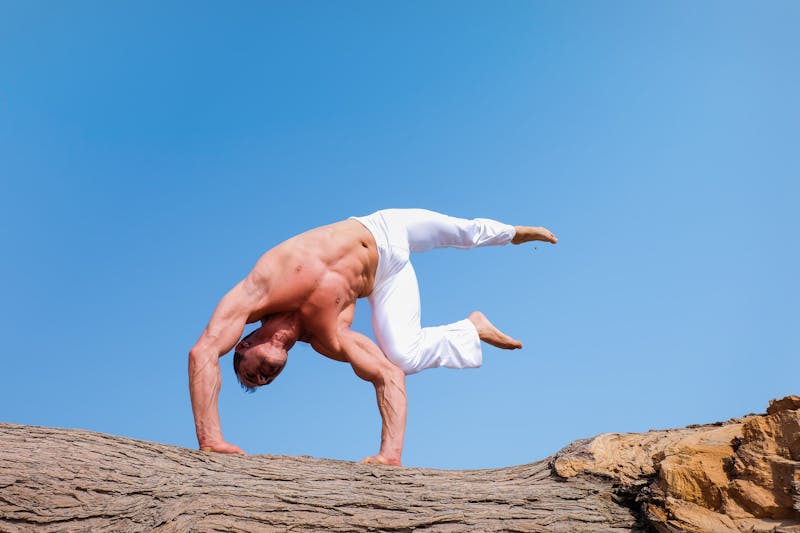
Calisthenics vs. Weight Training: Which Is Better?
Similarities:
- Both build muscle, strength, and endurance
- Both require progressive overload
- Both can be tailored for hypertrophy, strength, or conditioning
Differences:
| Calisthenics | Weight Training |
|---|---|
| Minimal equipment | Requires gym or home equipment |
| Functional, compound movement focus | Can isolate muscles |
| More balance/control challenges | Easier to quantify load |
| Often joint-friendly | Can overload joints if form is poor |
Which should you choose? You don’t have to pick one. Many people combine both. But if you want freedom, mobility, and a challenge that doesn’t require a gym—calisthenics is the answer.
Nutrition and Recovery for Calisthenics
Nutrition Basics:
- Protein: Key for muscle repair (aim for 0.7–1g per lb bodyweight)
- Whole foods: Prioritize fruits, vegetables, healthy fats
- Hydration: Especially important for joint and tendon health
Recovery Principles:
- Sleep 7–9 hours a night
- Stretch or do light mobility work on rest days
- Deload every 4–6 weeks if you’re training hard
🥗Just getting started with nutrition? This beginner’s guide from Wellness Verge offers simple, science-backed tips to help older adults eat well, boost energy, and support long-term health—without the overwhelm.

The Neuroscience of Calisthenics: Training Your Brain Through Movement
Bodyweight training doesn’t just train your muscles—it trains your brain. Unlike machine-based workouts that isolate movement patterns, calisthenics requires constant neuromuscular engagement, spatial awareness, and motor learning. Every rep is a form of brain training.
How Bodyweight Training Builds Brain-Body Intelligence:
1. Cognitive Load and Coordination
Advanced bodyweight training movements like handstands, planches, or even jumping lunges require your brain to coordinate multiple muscle groups in real time. These compound tasks improve proprioception (your sense of body position) and motor planning.
🧬 Studies show that complex physical movement increases gray matter volume and enhances neuroplasticity—the brain’s ability to adapt and form new connections.
2. The Mind-Muscle Connection
With no weights or machines guiding your range of motion, you must consciously recruit muscles and maintain form. This deepens the mind-muscle connection, which can lead to more effective muscle engagement and a heightened sense of bodily control.
3. Balance and Bilateral Symmetry
Calisthenics movements often involve balancing your body in unusual positions—think single-arm holds, pistol squats, or crow poses. These movements engage the vestibular system and force the brain to process real-time balance feedback, improving overall stability and coordination.
4. Movement as Meditation
For many practitioners, bodyweight training becomes a form of moving meditation. Repetitive bodyweight exercises sync with breath and rhythm, calming the nervous system while enhancing focus—similar to the effects of yoga or tai chi.
Why This Matters:
Most training programs neglect the cognitive dimension of fitness. But calisthenics naturally taps into it, making your workouts smarter, not just harder. This is especially powerful for older adults, where coordination and brain health become more crucial.
Why Bodyweight Training Is Ideal for Neurodivergent Training
Bodyweight training offers a flexible, empowering approach to fitness that aligns beautifully with the needs of neurodivergent individuals, including those with ADHD, autism spectrum conditions, sensory processing differences, and anxiety-related challenges.
Unlike rigid gym protocols, bodyweight training supports self-regulation, body awareness, and mental engagement in ways that traditional exercise often overlooks.
🧠 Exercise isn’t just helpful for ADHD—it’s uniquely therapeutic. According to the ADD Resource Center, individuals with ADHD experience more pronounced cognitive and behavioral improvements from physical activity than neurotypical peers. Moderate-intensity movement boosts dopamine, norepinephrine, and serotonin—directly addressing the neurochemical imbalances behind ADHD symptoms.

1. Freedom from Overstimulating Environments
Gyms can be overwhelming—bright lights, loud music, clanging weights, mirrors, and crowds. For those with sensory sensitivities or anxiety, this environment may discourage consistent training.
Calisthenics can be practiced:
- At home in a calm, personalized space
- Outdoors in quiet, natural settings (parks, backyards, trails)
- With minimal equipment, reducing visual and auditory clutter
This creates a low-stimulation, high-agency environment that supports focus and comfort.
2. Self-Paced and Autonomy-Driven
Many neurodivergent individuals thrive when they have control over their pace, routine, and structure. Calisthenics encourages this autonomy:
- Choose your own progressions
- Modify movements to suit energy levels and mood
- Stop and start as needed without rigid program constraints
This makes bodyweight training especially accessible for those who find traditional group classes or structured regimens challenging.
3. Natural Rhythmic Movement for Regulation
Repetitive bodyweight movements like push-ups, squats, or planks can have a calming, rhythmic effect on the nervous system. This is similar to techniques used in sensory integration therapy:
- Deep pressure (from muscular engagement) helps regulate sensory input
- Rhythmic motion can aid focus and soothe emotional dysregulation
- Ground-based exercises provide physical grounding—great for stress and anxiety
For individuals with ADHD or autism, these elements may reduce internal “noise” and support mental clarity.

4. Body Literacy Without Judgment
Calisthenics is inherently about body mastery, not aesthetics. Unlike weight training culture that often emphasizes appearance or numbers on a bar, calisthenics promotes:
- Listening to your body
- Celebrating small skill-based wins
- Measuring progress through function, not form
This emphasis on internal feedback over external validation makes it ideal for people who feel alienated by typical fitness messaging.
5. Flexible for Special Interests and Hyperfocus
Many neurodivergent individuals experience deep focus and enjoyment when pursuing a special interest—and calisthenics can become exactly that:
- Mastery of a single movement (e.g., handstand) can become a passionate focus
- Online communities and YouTube tutorials offer endless rabbit holes to explore
- Progressions offer lifelong skill paths, ideal for self-directed learners
Real-Life Example:
Someone with ADHD might struggle to stay engaged during a repetitive gym workout. But in calisthenics, they might switch between skills—working on push-ups, trying to balance in a crow pose, then practicing jump squats—all while staying active and engaged through movement variety.
Tips for Neurodivergent-Friendly Training:
- Listen to Your Body: Bodyweight training is about self-regulation, so focus on movements that feel comfortable and empowering.
- Allow Flexibility: Don’t worry about completing the routine perfectly. It’s okay to take breaks or adjust intensity based on energy levels or sensory needs.
- Create a Calming Environment: If you’re working out at home, consider dimming the lights, playing calming music, or eliminating distractions to create a sensory-friendly space.
Final Thoughts on Neurodivergent Benefits of Bodyweight Training
Calisthenics removes many of the barriers that make traditional fitness inaccessible to neurodivergent individuals. It’s adaptive, inclusive, rhythmically calming, and function-focused—qualities that empower people to train on their own terms, in tune with their unique minds and bodies.
Calisthenics in Military, Law Enforcement, and Functional Fitness
Calisthenics is more than just a bodyweight workout trend—it’s the foundation of physical preparedness for some of the most demanding careers in the world. From military boot camps to law enforcement academies and even everyday functional fitness, bodyweight training plays a critical role in building real-world strength, agility, and resilience.

Why Bodyweight Training is the Cornerstone of Military Fitness
What type of training does the military use?
The military uses calisthenics-based training such as push-ups, pull-ups, squats, running, and core exercises to build muscular endurance, cardiovascular capacity, and combat readiness.
Military personnel are expected to operate under extreme physical conditions, and calisthenics forms the bedrock of their physical training. It develops not only raw strength but also the endurance and functional mobility needed to carry heavy loads, sprint under fire, or scale obstacles during missions.
Key reasons why calisthenics is prioritized in military training:
- Scalability: Exercises can be adapted for recruits or elite operators alike.
- Minimal Equipment: Perfect for field conditions where gyms are unavailable.
- Combat Readiness: Movements like crawling, jumping, and climbing mimic real-life combat scenarios.
- Injury Prevention: Bodyweight training promotes joint health and muscular balance.
Military branches across the globe—from the U.S. Army to the British Royal Marines—use bodyweight training as a base and test personnel on it in their Physical Fitness Tests (PFTs).
Law Enforcement: Strength, Stamina, and Readiness
In law enforcement, being fit isn’t just a personal goal—it’s a job requirement. Officers must be able to chase suspects, subdue assailants, and remain calm and capable under physical stress. Bodyweight training is a preferred method of training in many police academies and departments due to its efficiency and effectiveness.
Police officers train using calisthenics to improve cardiovascular fitness, muscular endurance, and agility, often focusing on exercises like push-ups, planks, running, and obstacle course work.
Core benefits of bodyweight training for law enforcement:
- Real-World Application: Movements simulate physical scenarios officers face on duty.
- Enhanced Recovery: Low impact yet effective for building muscular endurance.
- Consistency: Officers can stay fit without needing a gym or extensive equipment.
- Group Cohesion: Many academies use synchronized bodyweight drills to build team dynamics.
Push-up and sit-up benchmarks are common in police fitness testing, while running and sprint intervals reflect the high-speed chases officers may encounter in the field.
🪖 Military fitness isn’t just about strength—it’s about readiness. The U.S. Army Fitness Test evaluates Soldiers across six events: deadlifts, hand-release push-ups, sprint-drag-carry drills, planks, and a timed two-mile run. Each event is designed to build muscular strength, endurance, coordination, and mental toughness. Scoring is age- and gender-adjusted, with a minimum of 60 points per event required to pass
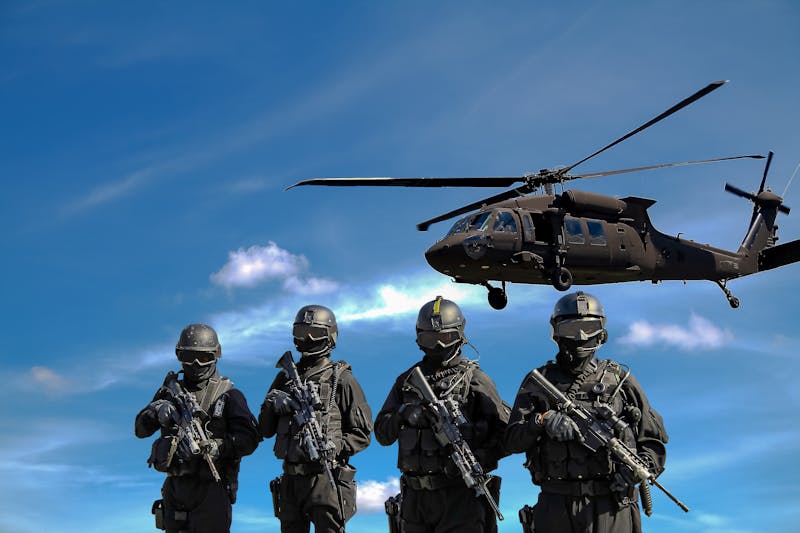
Functional Fitness: Bodyweight Training for Everyday Life
What is functional fitness training?
Functional fitness training involves exercises that prepare your body for real-life movements and activities, emphasizing strength, stability, and mobility. Calisthenics is a key method for building functional fitness.
Functional fitness is all about training the body to perform daily activities more efficiently and safely. Unlike isolated machine-based gym workouts, calisthenics develops integrated strength—teaching the body to move as a unit.
Benefits of using bodyweight training for functional fitness:
- Core Stability: Every movement engages the core, improving posture and balance.
- Mobility and Flexibility: Exercises like deep squats and lunges promote joint health.
- Movement Mastery: Skills like pull-ups and dips require coordination, control, and flexibility—skills you use every day when lifting, reaching, or balancing.
- Long-Term Sustainability: Easy on the joints, calisthenics offers a lifelong path to staying fit without overuse injuries.
People in high-stress physical jobs, from firefighters to warehouse workers, often turn to calisthenics to maintain the strength and agility needed for their work and lifestyle.
🧱 Want to take functional strength even further? Explore our Farmer Strength blueprint for building rugged, real-world power through grip, carry, and compound movement—perfect for older adults who want strength that shows up in daily life.
Final Thoughts: Why Calisthenics Deserves a Place in Your Life
Calisthenics isn’t just a workout—it’s a lifelong skillset. Whether you’re rebuilding strength, chasing advanced skills, or simply staying active on your own terms, bodyweight training meets you where you are—and takes you further.
Ready to take the next step? 🔹 Explore our beginner routines and advanced progressions 🔹 Dive into gear reviews and minimalist training tips 🔹 Or start building your own bodyweight blueprint today
💬 Got questions or want help choosing your next move? Explore our full calisthenics library for tailored advice.
📚Ready to dive deeper into bodyweight fitness? Browse more expert articles on Shawn’s Health covering strength, mobility, and progression tips tailored for older adults building confidence and independence.
🔥 Explore More Bodyweight & Calisthenics Training Articles
Looking to go deeper? These curated articles expand on key calisthenics topics—from beginner routines and form fixes to advanced strength and travel-friendly workouts.
🏁 Getting Started with Calisthenics
- Calisthenics Plan for Beginners A step-by-step plan to build foundational strength with no equipment. Ideal for newcomers or those returning to fitness.
- Beginner Calisthenics: 5 Powerful Moves Learn the five essential bodyweight exercises that build strength and mobility from day one.
- Quick 15-Minute Home Workouts Short, effective routines for busy days—perfect for staying consistent without a gym.
- Calisthenics for Beginners at Home A home-based guide for starting calisthenics safely and confidently, especially if you’re easing into fitness.
🧠 Fix Common Mistakes & Form
- 5 Common Calisthenics Mistakes Avoid poor form, overtraining, and stalled progress with these essential tips.
- How to Do a Correct Push-Up Master push-up technique to prevent injury and maximize strength gains.
- How to Master Different Push-Ups Explore push-up variations for building endurance, muscle, and control.
💪 Build Strength & Muscle
- Calisthenics Strength Training Learn how to build muscle and power using progressive bodyweight techniques.
- Calisthenics Strength Routines Weekly plans designed to increase strength and performance over time.
- Mastering 100 Push-Ups in a Row A structured challenge to build endurance and upper-body resilience.
- Can Calisthenics Build Muscle and Burn Fat? Explore the science behind body recomposition using only bodyweight training.
🚶♂️ Train Anywhere, Anytime
- 7 Hotel Workouts Without Equipment Travel-friendly workouts that keep you fit on the road—no gear required.
- Fitness Tips for Van Life Stay strong and mobile while living or traveling in a van with minimalist routines.
🧘♂️ Hybrid Training & Special Populations
- Calisthenics and Yoga for Full-Body Fitness Blend mobility and strength with a hybrid approach to bodyweight and yoga.
- Calisthenics for Seniors: Boost Strength and Mobility Joint-friendly routines designed to build confidence and independence later in life.
- Weightlifting vs. Calisthenics 2025 Compare training styles to find what fits your goals, lifestyle, and recovery needs.
🧱 Functional Strength & Scalable Bodyweight Progressions
These articles focus on building real-world strength, mastering foundational movements, and adapting bodyweight training for all ages and ability levels—including seniors and those training at home.
- Functional Strength Through Calisthenics Learn how bodyweight training builds practical, everyday strength for work, movement, and long-term resilience.
- 3 Powerful Calisthenics Exercises Discover three high-impact movements that deliver strength, mobility, and control—ideal for any level.
- Different Pull-Ups for All Levels Explore pull-up variations from assisted to advanced, with tips for building grip and back strength.
- 7 Leg Exercises Without Weights Build lower-body strength and stability with joint-friendly, equipment-free movements.
- How to Master Bodyweight Training A strategic guide to progressing from basic movements to advanced calisthenics skills—perfect for self-paced mastery.
- Calisthenics for Seniors: Boost Vitality Increase strength, flexibility, and energy with low-impact routines tailored for older adults.
- Bodyweight Exercises: 7 Incredible Workouts A roundup of full-body workouts that challenge strength, endurance, and coordination—no equipment needed.
- Bodyweight Strength Training for Seniors at Home Build strength safely at home with routines designed for joint health, balance, and functional movement.
🚶♂️Ready to take your first step? Try these beginner calisthenics exercises and build your foundation today with simple, joint-friendly movements designed for older adults starting their fitness journey.

Frequently Asked Questions (FAQ)
Q: Can I build muscle with just Bodyweight Training?
A: Absolutely. Progressive overload, combined with adequate nutrition, stimulates hypertrophy—just like lifting weights.
Q: How long does it take to see results?
A: Most people feel stronger and more energetic in 2–4 weeks. Visible changes often appear around the 8–12 week mark.
Q: What equipment do I need?
A: None to start. A pull-up bar and resistance bands are great additions as you progress.
Q: Is calisthenics better for fat loss?
A: It’s effective for fat loss when combined with proper nutrition. High-intensity bodyweight circuits burn serious calories.
Q: I’m over 40—can I still start calisthenics?
A: Yes! It’s low-impact and joint-friendly. Start slow, focus on form, and progress gradually.
Q: Can I combine calisthenics with other training?
A: Definitely. You can mix it with cardio, weight training, or yoga to build a complete fitness lifestyle.
Finally, my brethren, be strong in the Lord, and in the power of His might. – Ephesians 6:10

